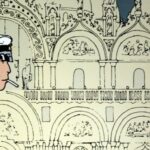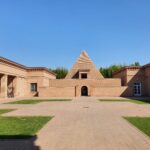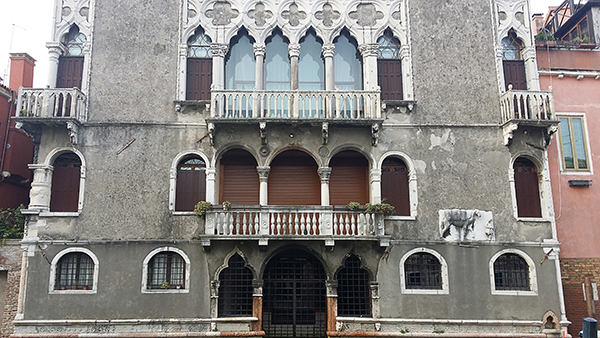
Venice, with its canals winding like veins through the pulsating heart of the city, conceals within its mists stories waiting to be unveiled. Beyond the usual routes, where tourists’ footsteps echo on worn stones, there are corners of tranquility where time seems to have stopped, and every stone, every window, tells a forgotten chapter of Venetian history.
On one of these less trodden paths, in the Cannaregio district, where the echoes of Marco Polo’s footsteps still seem to linger in the alleyways, I stumbled upon the Mastelli Palace, also known as the Camel Palace. Its facade, reflected in the calm waters of the Rio della Madonna dell’Orto, is a palimpsest of epochs and styles merging into a silent harmony.
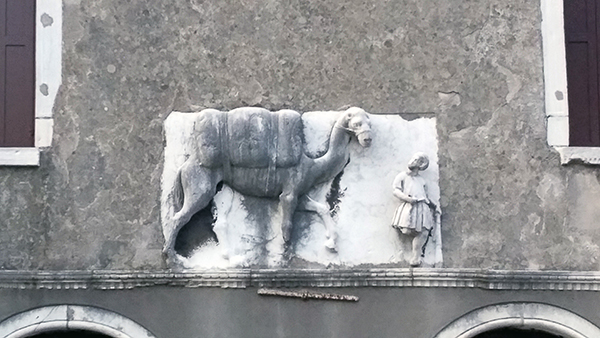
The bas-relief of a camel, which gave the palace its nickname, is just the beginning of a journey through time. The structure, dating back to the 12th century, has witnessed countless modifications, each leaving its mark, like the pages of a book overlapping without ever completely erasing each other.
The upper floor, with its late Gothic polyptych, is a triumph of Istrian stone and pink Veronese broccatello, decorated with Byzantine patere and floral motifs that narrate an era when Venice was the crossroads of the known world.
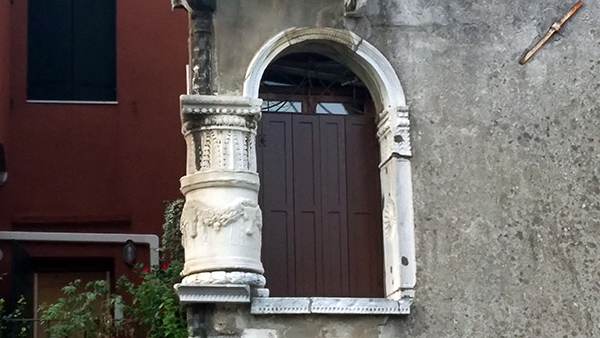
On the first floor, the Lombard Renaissance manifests in all its elegance, with a Roman altar repurposed as a corner column, testifying to the ingenuity of a people who knew how to adapt the beauty of the past to the needs of the present.
The Arabic-style fountain, still at the base of the palace, is a tangible reminder of the origin of the merchants who built it, a tribute to their distant land and a sign of hospitality for the gondoliers who passed by.
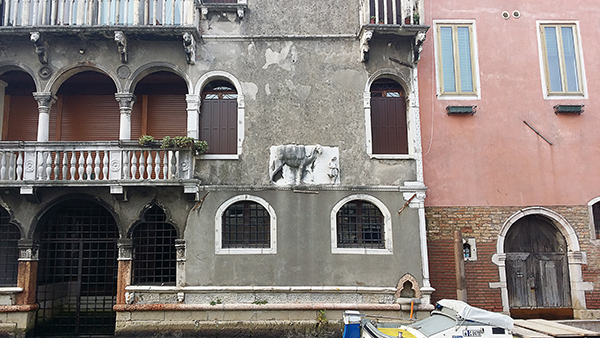
The three Mastelli brothers, Rioba, Sandi, and Afani, merchants from the Morea, are the enigmatic figures at the center of this story. Their wealth, perhaps accumulated in basins full of money, has become legendary, even influencing the very name of their palace.
The statues in the Campo dei Mori, depicting the three brothers and their servant, are a bridge between past and present, like stone guardians watching the world change without ever leaving their post.
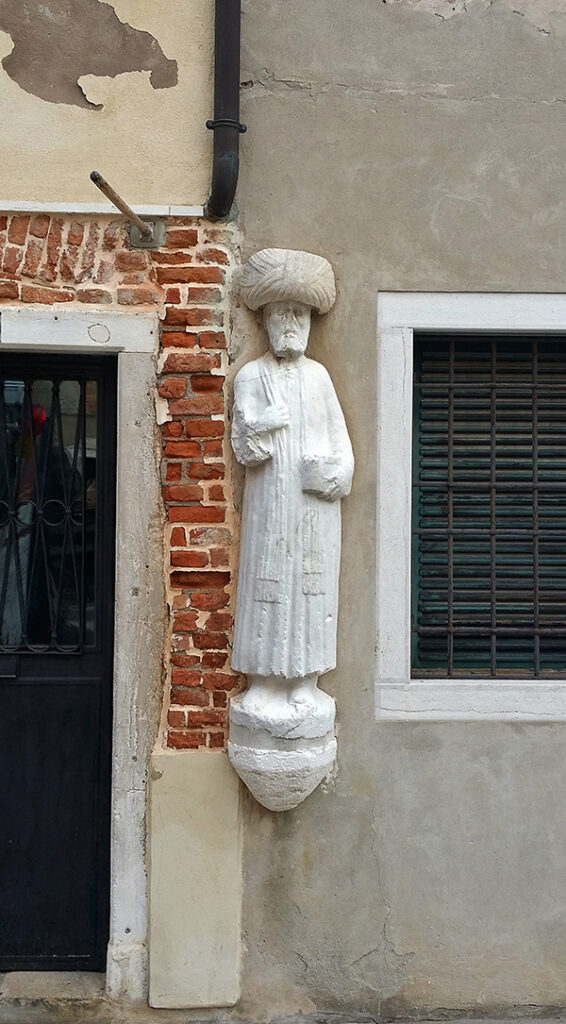
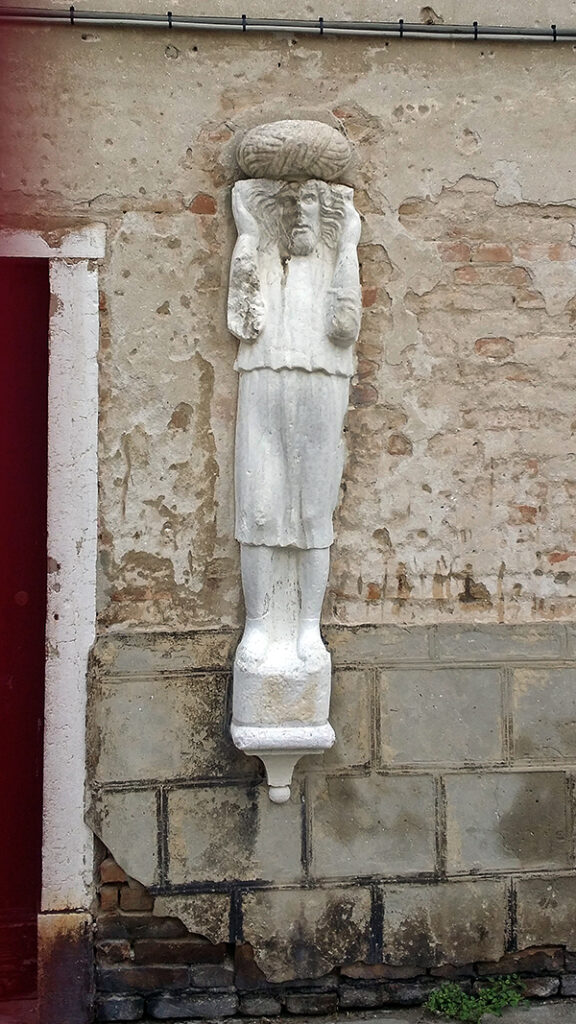
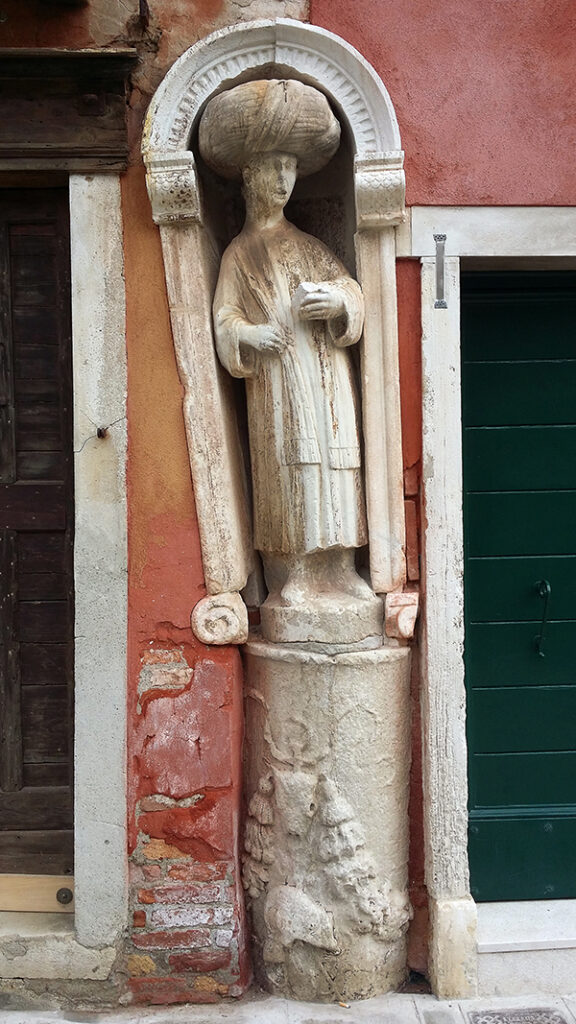
And then there’s the metal nose, a curious detail that has become a talisman for Venetians and visitors alike: touching it is said to bring good fortune in business. Its disappearance and subsequent rediscovery add another layer of mystery and charm to this already story-rich place.
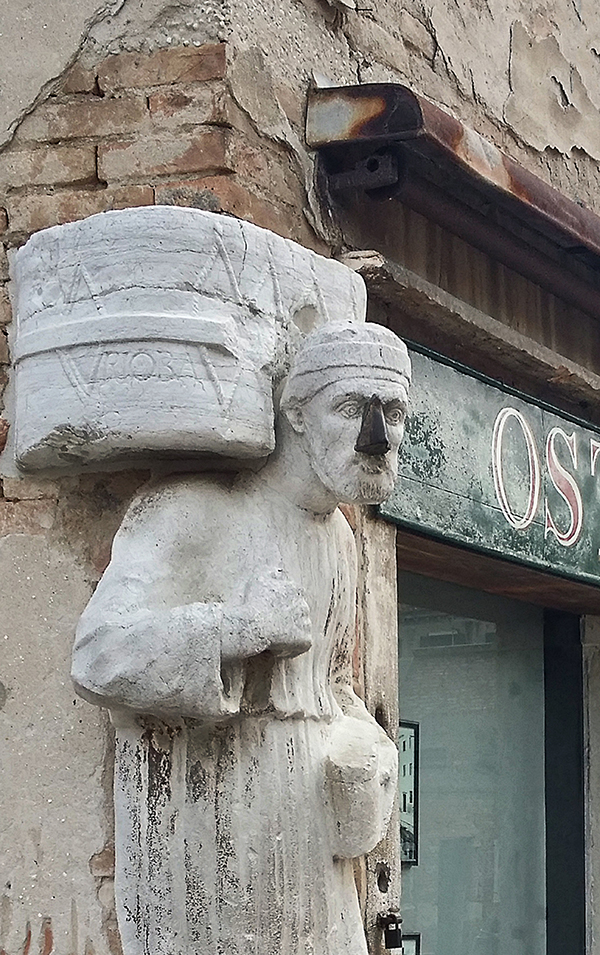
Finally, the legend of unrequited love, where an Eastern merchant carves the image of a camel on the facade of the palace in hopes that his beloved, left in his homeland, might one day recognize his home and join him. A story that, true or not, intertwines perfectly with the dream-like atmosphere of reality that only Venice can offer.
In this labyrinth of stone and water, every hidden corner, every architectural detail, is an invitation to get lost in order to find, in a timeless journey, the true essence of a city without equal.



